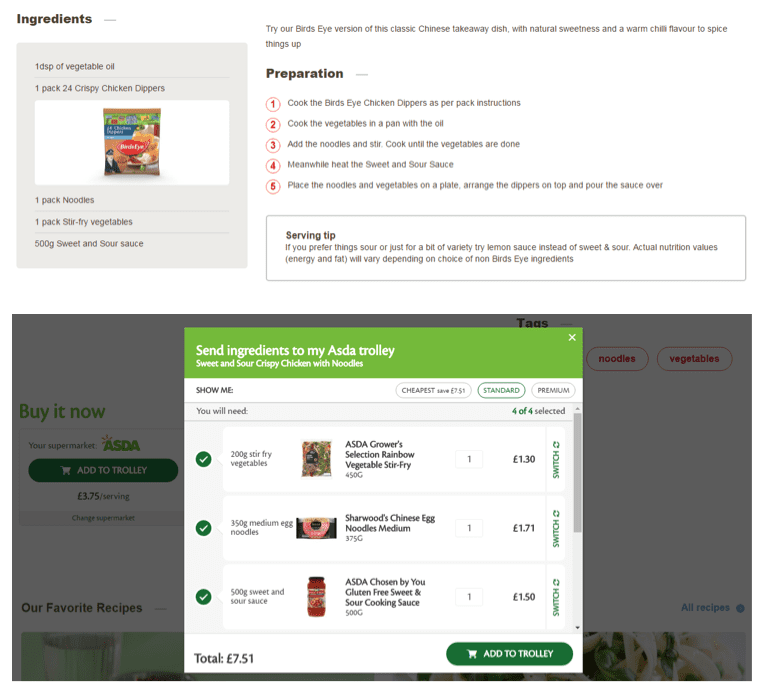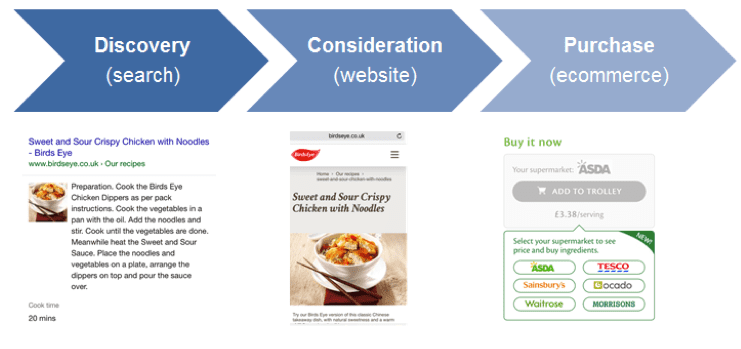Three areas of focus to make shoppable marketing work for you and your brand
As recently highlighted in Smart Insights’ top ecommerce trends briefing, 2017 will see a number of really interesting developments, from subscription-based business models to the growth of artificial intelligence and chatbots. However, one trend that caught my attention was the prediction that shoppable personalised video will break through as technology and programmatic capabilities advance:

The concept of ‘shoppable marketing’ is something I’ve been looking at more closely recently as I investigate new ways to combine ecommerce and digital marketing and create more compelling customer experiences. With more people than ever having access to broadband and smartphones - spending more time online, the rise in online shopping means there are more opportunities to capture customers in the moments that matter.
Defining the shoppable marketing touchpoints
Many brands spend a great deal of money building their brands to reach consumers but don’t necessarily close the loop to enable those consumers to buy in the channels and moments that are most relevant and convenient. Shoppable marketing enables brands to make their content (whether it be display, social media, website, TV or out of home) interactive and connected to an ecommerce platform.
Shoppable marketing isn’t just about advanced personalised video as mentioned in the Smart Insights trends briefing. It involves any type of marketing that allows consumers to buy products there and then in the moment and may include social commerce such as Instagram’s click-to-shop ads, shoppbale TV ads or even virtual stores such as Tesco in South Korea.
There is a wide range of different digital touch points that provide shoppable marketing opportunities:

The key as always is to find the right channels and opportunities that support your current and future capabilities and align with your overall business objectives.
Three areas to make shoppable marketing work
Despite predictions to the contrary, we’ve yet to see shoppable marketing really take off and catch up with consumer expectations. Implementing shoppable marketing is not a straightforward task: for a start, marketing operations are often divided between brand and ecommerce. Secondly, there’s a requirement for a good level technology and expertise (both internally and externally).
Nevertheless, we are starting to see brands and retailers experimenting with a number of different channels to provide shoppable experiences and it’s interesting to note three common themes:
Leverage new partnerships
Working collaboratively with retailers is something Bird’s Eye have been doing in order to connect more directly with consumers and shorten the path to purchase:

The recipes section of their website is a perfect opportunity to provide real convenience for consumers and solve a problem by answering two questions:
- ‘What am I going to eat?’
- ‘Where am I going to buy it?’
No matter how inspiring the recipe, non-shoppable recipes rely on the consumer making a note of each ingredient and buying them on their next shopping trip. By enabling the consumer to make a purchase there and then within the page increases conversion rates and ensures that Bird’s Eye products, rather than another brand, are bought.
Create frictionless experiences
The Bird’s Eye example also demonstrates the importance of creating a frictionless experience. Expecting someone to go through many different steps to finally purchase a product will frustrate them and ultimately decrease conversion rate. Bird’s Eye make it easy for consumers to go through the path to purchase from initial discovery via search to conversion via the ecommerce functionality enabled within the site:

Bonus points must also go to Bird’s Eye for the recipe rich snippet to help the result stand out in the SERPs!
For more advanced shoppable marketing, such as personalised video, creating a seamless experience is even more important because of the technical nature of integrating shoppable elements within a piece of creative content. The video should be designed in such a way as to allow the user to easily click or tap the products they’re interested in, whilst at the same time the shoppable functions should not get in the way or detract from the user’s overall enjoyment of the content.
Be relevant
Shoppable marketing can only work when it is relevant to the consumer at the right time and place. Bird’s Eye ensure their shoppable experience is relevant by solving a problem and answering the dual question of what to eat and where to buy it through interesting and popular recipes. By positioning the product in a great use case, Bird’s Eye give people a clear reason to buy (rather than just telling them about a great recipe idea) and the frictionless experience adds further convenience to enhance conversion rate.
Being relevant is also about tapping into trends, events and cultural movements. In 2015 L’Oreal Paris created a shoppable social commerce experience by working with influencers and models to recreate the styles the stars were showcasing on the red carpet in real-time as shoppable content.

The brand had identified the red carpet as a ‘key moment for beauty’ and understood that this was the time when there would be the maximum amount of social chatter about clothes, hair and (most relevant for L’Oreal) make-up.
Conclusion
Shoppable marketing is still a relatively nascent concept but is a natural next step for digital markets looking to bridge the gap between building awareness and interest and generating conversion. Shoppable marketing involves finding the right opportunities to bring interactivity and purchase opportunities in the moments that matter to consumers.
Making a piece of content shoppable, whether it be a web page, video or social media post, is not straightforward, both from a technical and creative perspective. The shoppable elements must be relevant to the consumer and the content in which it sits, and they must also provide a seamless experience. Failure to meet this criteria will impact the user experience and could harm dwell time, engagement and conversion rates. Great shoppable marketing also involves spotting opportunities to connect with trends and events to provide something of value when consumers are really interested in a particular topic, such as a fashion show or sports event.












